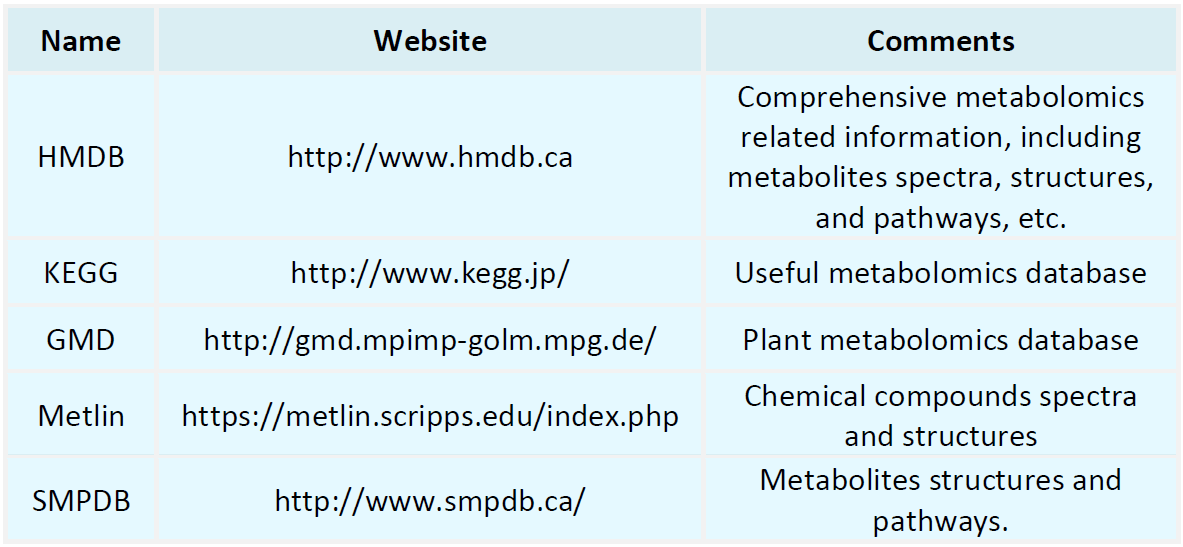Resources
Proteomics Databases

Metabolomics Databases

-
• A Comprehensive Phosphoproteomics Workflow: From Sample Preparation to Data Analysis
Phosphoproteomics represents a crucial subfield of proteomics dedicated to the study of protein phosphorylation and its functional roles within cells. Protein phosphorylation, a common and reversible post-translational modification, involves the addition of phosphate groups to serine, threonine, or tyrosine residues. This process modulates protein activity, subcellular localization, stability, and molecular interactions. In cellular signaling pathways, phosphorylation functions as a molecular switch, ......
-
• Targeted Protein Quantification: Achieving Precision at the Peptide Level through PRM Technology
In proteomics research, achieving accurate and reproducible quantification of proteins of interest is essential for elucidating disease mechanisms, validating drug targets, and facilitating translational studies. However, due to the intrinsic complexity of proteins and the vast dynamic range of their expression levels, direct quantification at the protein level remains highly challenging. Consequently, peptide level quantification strategies have emerged as the predominant approach. Parallel Reaction ......
-
• Advantages and Disadvantages of High-Throughput Olink Proteomics Analysis
In the fields of precision medicine and biomarker discovery, proteomic analysis has emerged as a powerful approach for elucidating disease mechanisms and identifying diagnostic targets. The high-throughput Olink platform, based on Proximity Extension Assay (PEA) technology, has gained increasing popularity in clinical cohort studies and drug development, owing to its exceptional sensitivity, minimal sample input, and capacity for large-scale multiplexed detection. However, like any analytical method, ......
-
• Olink PEA vs. Mass Spectrometry: A Comparative Analysis of Proteomic Technologies
Mass spectrometry (MS) and Olink’s proximity extension assay (PEA) technology are two predominant approaches in proteomics research. Each offers distinct advantages and is suited for different research objectives and contexts. This paper presents a comprehensive comparison of the two technologies across technical principles, detection throughput, sensitivity, quantitative capability, and application scenarios, to aid researchers in selecting the most suitable proteomic strategy. Core Principles of Ma......
-
• Overview of Protein Phosphorylation Detection Techniques
Protein phosphorylation detection primarily encompasses antibody-based approaches, mass spectrometry (MS)-based phosphoproteomic analyses combined with phosphopeptide enrichment strategies, as well as emerging technologies with single-cell and spatial resolution capabilities (e.g., proximity ligation assay [PLA], mass spectrometry imaging [MSI]). Protein phosphorylation is one of the most essential post-translational modifications (PTMs), playing a pivotal role in cellular signal transduction, metabol......
-
• Common Reasons for Olink Experiment Failures and Corresponding Solutions
In proteomic studies using the Olink platform based on Proximity Extension Assay (PEA) technology, researchers are able to profile thousands of proteins using only minimal amounts of plasma or serum (1–3 μL). Nonetheless, experiments may encounter various obstacles. Low detection rates, limited reproducibility, and systematic bias can render data unusable or lead to inaccurate conclusions. This article summarizes the major causes of failure in Olink experiments and provides practical solutions to help......
-
• Accurate Determination of Protein Molecular Weight by Mass Spectrometry
Proteins serve as the primary functional molecules in cellular processes, and their molecular weight directly reflects their amino acid sequence and structural integrity. As such, molecular weight is a critical parameter in protein identification, functional prediction, and quality control. In the biopharmaceutical industry, minor variations in protein molecular weight often indicate post-translational modifications (e.g., glycosylation, oxidation) or the presence of degradation products, which are cr......
-
• Designing an Efficient Co‑immunoprecipitation (Co‑IP) Protocol
Co-immunoprecipitation (Co‑IP) is a classical technique for investigating protein–protein interactions, widely applied in the analysis of signaling pathways, target validation, and drug mechanism studies. By enriching target proteins and their associated complexes using specific antibodies, followed by detection via Western blot or mass spectrometry, Co‑IP enables the effective capture of native protein interactions within cells. Despite its seemingly straightforward principle, Co‑IP is technically de......
-
• Targeted Metabolomics: Principles and Key Techniques
Metabolites represent the most immediate biochemical reflection of physiological states in life science research. Unlike genomics, transcriptomics, or proteomics, metabolomics directly captures cellular and systemic responses to internal and external environmental perturbations, making it a vital tool for elucidating disease mechanisms, identifying biomarkers, and exploring drug actions. Among various branches of metabolomics, targeted metabolomics has gained increasing prominence in diverse research ......
-
• Mass Spectrometry in Histone Modification Research: Advantages and Challenges
Post-translational modifications (PTMs) of histones play a central role in regulating chromatin architecture, gene expression, and cell fate decisions. Diverse modification types, including acetylation (Ac), methylation (Me), phosphorylation (P), and ubiquitination (Ub), constitute a complex histone modification code that collectively orchestrates epigenetic regulation. In recent years, the rapid advancement of mass spectrometry (MS) has transformed histone PTM research, enabling comprehensive analysi......
How to order?







